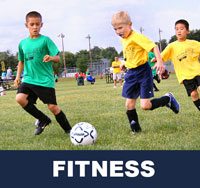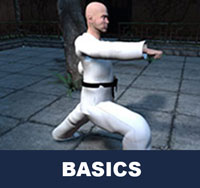Taekwondo 태권도Taekwondo Preschool
Promotion from one geup to the next can proceed rapidly in some schools, since schools often allow geup promotions every two, three, or four months. Students of geup rank learn the most basic techniques first, and then move on to more advanced techniques as they approach first dan. Many of the older and more traditional schools often take longer to allow students to test for higher ranks than newer, more contemporary schools, as they may not have the required testing intervals. View Taekwondo belt levels »

About Balance
Sports injuries are injuries that occur in athletic activities. They can result from acute trauma, or from overuse of a particular body part. Please see a certified specialist or doctor for sports injuries. Proper guidance and instructions are needed from a certified Master Instructor ( 사범님 sabeomnim ) to ensure safe training.
In biomechanics, balance is an ability to maintain the line of gravity (vertical line from centre of mass) of a body within the base of support with minimal postural sway. Sway is the horizontal movement of the centre of gravity even when a person is standing still. A certain amount of sway is essential and inevitable due to small perturbations within the body (breathing, shifting body weight for one foot to the other or from forefoot to rearfoot) or from external triggers (visual distortions, floor translations). An increase in sway is not necessarily an indicator of dysfunctional balance so much as it is an indicator of decreased sensorimotor control.
The importance of visual input for balance is illustrated by its being harder to stand on one foot with eyes closed than with eyes open.
The sense of balance, usually, deteriorates in the process of aging of a person. However, it can be improved considerably with the help of special training.
Given the high incidence of ankle injuries and instabilities, a proper external support system must be established. As athletes and people of everyday life undergo stresses that alter the mechanical support of their ankle, addressing the issue of body sway and stability can lead to multiple benefits. If one is able to wear an external support to decrease their body sway and increase stability, injuries and faults up the kinetic chain can diminish. Problems with balance can be related to their unstable ankles, leading to an alteration in their kinetic chain. Fixing the instability and body sway can eliminate issues along the kinetic chain and positively influence someone’s life experience.
Balance Training
Since balance is a key predictor of recovery and is required in so many of our activities of daily living, it is often introduced into treatment plans by physiotherapists and occupational therapists when dealing with geriatrics, patients with neurological conditions, or others whom they have determined it to be beneficial.
Balance training in stroke patients has been supported in the literature. Methods commonly used and proven to be effective for this population include sitting or standing balance practice with various progressions including reaching, variations in base of support, use of tilt boards, gait training varying speed, and stair climbing exercises. The type of training should be determined by a physiotherapist and will depend on the nature and severity of the stroke, stage of recovery, and the patient’s abilities and impairments after the stroke.
Populations such as the elderly, children with neuromuscular diseases, and those with motor deficits such as chronic ankle instability have all been studied and balance training has been shown to result in improvements in postural sway and improved “one-legged stance balance” in these groups. The effects of balance training can be measured by more varied means, but typical quantitative outcomes are centre of pressure (CoP), postural sway, and static/dynamic balance, which are measured by the subject’s ability to maintain a set body position while undergoing some type of instability.

Related Articles
Physical fitness is a general state of health and well-being or specifically the ability to perform aspects of sports or occupations. It is a set of attributes or characteristics that people have or achieve that relates to the ability to perform physical activity. View Physical Fitness »
- Stretch - Form of physical exercise in which a specific muscle or tendon (or muscle group) is deliberately flexed or stretched in order to improve the muscle's felt elasticity and achieve comfortable muscle tone. The result is a feeling of increased muscle control, flexibility and range of motion.
- Flexibility - Refers to the absolute range of movement in a joint or series of joints, and length in muscles that cross the joints. Flexibility in some joints can be increased to a certain degree by exercise, with stretching a common exercise component to maintain or improve flexibility.
- Endurance - Ability of a practitioner to exert itself and remain active for a long period of time, as well as its ability to resist, withstand, recover from, and have immunity to trauma, wounds, or fatigue.
- Balance - Ability to maintain the line of gravity (vertical line from centre of mass) of a body within the base of support with minimal postural sway. Sway is the horizontal movement of the centre of gravity even when a person is standing still.
- Agility - Or nimbleness is the ability to change the body's position efficiently, and requires the integration of isolated movement skills using a combination of balance, coordination, speed, reflexes, strength, and endurance.

Taekwondo Basics
Here is where you can learn more about Taekwondo 태권도. Knowing the fundamental basics is very important for your learning path as you build your skills and knowledge. There are certain rules that need to be followed to show respect to the master ( 사범님 sabeomnim ), the instructors ( 교사님 gyosannim ), other practitioners and to the martial arts. They vary between schools but many have similar rules and guidelines. For more information View Taekwondo Basics »
Please follow the guidance of a certified Master Instructor or trainer when doing sports related activities. The article provided on this page is information that is widely available on Wikipedia article "Balance (ability)". Risk of injury can be reduced by completing an effective warm up consisting of a heart raiser to get your pulse up, followed by sport specific dynamic stretches (stretches whilst moving).
There are five tenets defined in the International Taekwondo Federation (ITF) and several more in World Taekwondo (WT).
Indomitable spirit ( 백절불굴 baekjul-boolgool ): "To have indomitable spirit means to have the courage to stand up for what you believe in, no matter what odds you are up against, and to always give 100% effort in whatever you do." View Taekwondo Tenets »
RESOURCES
This article uses material from the Wikipedia article "Balance (ability)", which is released under the Creative Commons Attribution-Share-Alike License 3.0.






















